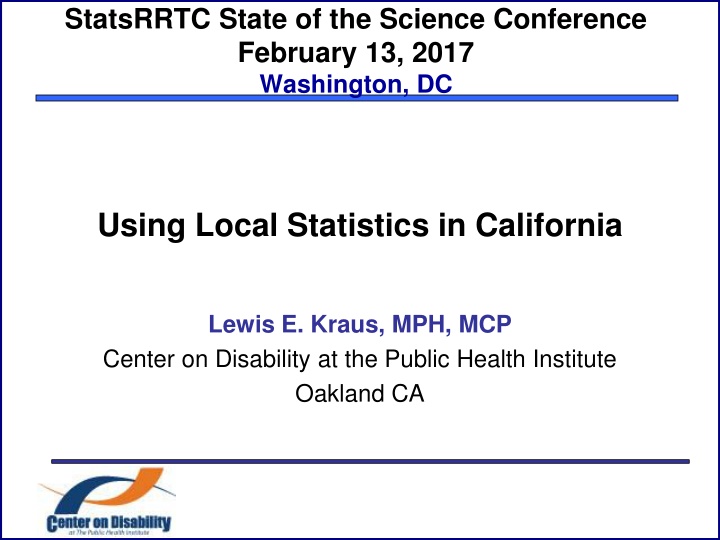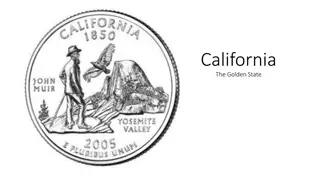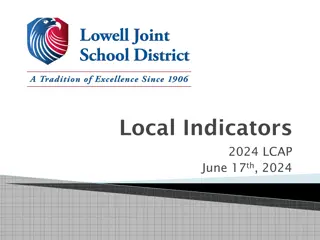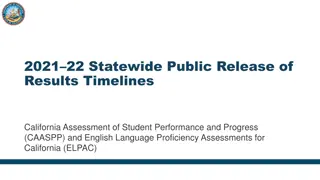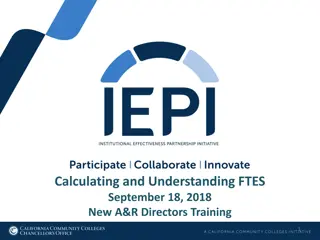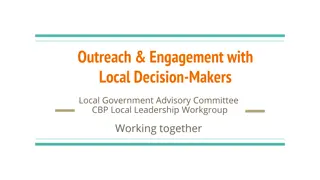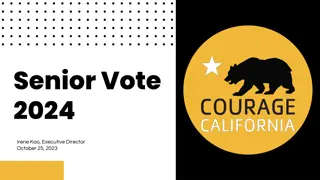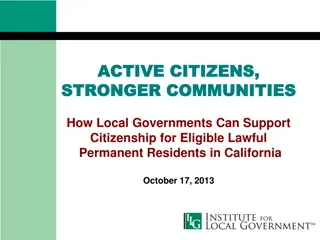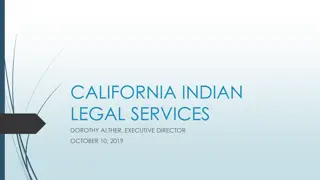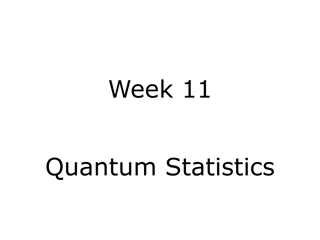Using Local Statistics in California
This presentation by Lewis E. Kraus at the State of the Science Conference in Washington, DC discusses utilizing local statistics in California for disability research. The focus is on understanding the significance of local data and its application in public health initiatives, particularly in the context of disabilities. Insights shared delve into the implications of California-specific statistics on informing policy decisions, program development, and resource allocation. The presentation sheds light on the importance of incorporating local data to drive effective strategies in addressing disability-related challenges within the state.
Download Presentation

Please find below an Image/Link to download the presentation.
The content on the website is provided AS IS for your information and personal use only. It may not be sold, licensed, or shared on other websites without obtaining consent from the author.If you encounter any issues during the download, it is possible that the publisher has removed the file from their server.
You are allowed to download the files provided on this website for personal or commercial use, subject to the condition that they are used lawfully. All files are the property of their respective owners.
The content on the website is provided AS IS for your information and personal use only. It may not be sold, licensed, or shared on other websites without obtaining consent from the author.
E N D
Presentation Transcript
StatsRRTC State of the Science Conference February 13, 2017 Washington, DC Using Local Statistics in California Lewis E. Kraus, MPH, MCP Center on Disability at the Public Health Institute Oakland CA
Overall Project Development and use of local disability statistics Created website to host local disability data Used the ACS API Shared with interested parties locally and nationally Discussed specific data needs
Project Resulted in 4 efforts Case Studies Marin County, California Disability Access Program Alameda County, California Department of Public Health Health action partnership in Jefferson County, AL FEMA Office of Disability Integration and Coordination
Case Study Marin County, CA Disability Access Program Affluent, but pockets of lower income County disability population rate is 8.8% Lower than US rate
Project Marin County, CA Disability Access Program In 2015, requested zip code level data Purpose set priorities in programs for people with disabilities Capital improvements and engineering Diversity in employment initiative Raise disability awareness with supervisor aides
Product Marin County, CA Disability Access Program Zip code level disability data spreadsheet
Product Use Results Marin County, CA Disability Access Program Capital improvements and engineering Able to prioritize facility and pedestrian right of way work Diversity in employment initiative Internal processes show awareness Raise disability awareness with supervisor aides Ongoing; hope for long-term impact
Product Use Results Marin County, CA Disability Access Program Staff feels it is a success I have the spreadsheet taped right above my computer. It s the first thing I see everyday. Successful attributes Needed internal advocate with plan for data, external data expert, and then let internal mechanisms work
Case Study Alameda County, CA Department of Public Health Low income areas, racially diverse; also home to UC Berkeley; new high tech workers unable to afford housing elsewhere in Bay County disability population rate is 9.5% Lower than US rate
Project Alameda County, CA Department of Public Health 2014 Accreditation Alameda County Health Data Profile Community Health Status Assessment for Public Health Accreditation. Would guide the Community Health Improvement Plan About health equity, segmented population but not by disability
Project Alameda County, CA Department of Public Health Report about health equity, segmented population, but not by disability would guide the Community Health Improvement Plan or CHIP Internal advocate noted no disability data in report = no awareness of disability issues Director agreed
Product Alameda County, CA Department of Public Health Internal supplement to report on disability We assisted intern Meeting with Director about report Consulting with Epidemiology group to clarify use of disability data (disability awareness) Epidemiology group created report and talks Now, trainings on inclusion of disability planned
Product Use Results Alameda County, CA Department of Public Health Successful attributes Too new to say (training agreements being set up now) Internal disability awareness raised Needed an internal advocate, external data expert, an open-minded leadership, and then let internal mechanisms work
Case Study Health action partnership in Jefferson County, AL Community Health Improvement plan for Jefferson County External advocates in Health Action partnership wanted disability data for grants Also wanted surrounding counties for comparison
Product Health action partnership in Jefferson County, AL Disability Statistics for Alabama and the Counties of Blount, Jefferson, St. Clair, Shelby, and Walker A report based on Annual Report on Disability created for 5 county area
Product Health action partnership in Jefferson County, AL
Product Health action partnership in Jefferson County, AL
Product Use Results Health action partnership in Jefferson County, AL Report used for Disability awareness of partners To seek further grants Provided data to Jefferson County Health Department Provided data to Lakeshore Foundation
Product Use Results Health action partnership in Jefferson County, AL Increased capacity to include disability in program grants Raised awareness Health People 2020 advocacy Provided data, inclusion manual, and trainings Outreach more inclusive
Product Use Results Health action partnership in Jefferson County, AL Data is part of the process to moving the needle for inclusion. Takes more than just meetings. So often statistics don t complete the narrative of the story. But data makes it more impactful. Really believe they would not have been as open to receiving data without the preparation done in capacity building.
Product Use Results Health action partnership in Jefferson County, AL Developed internal advocates through previous work, provided external data and expertise, and let organizations work within their structure to include disability.
Case Study FEMA Office of Disability Integration and Coordination Started in 2010 for whole community emergency management, inclusive of individuals with disabilities and others with access and functional needs 10 Regional Disability Integration Specialists Guidance, training, and tools for disability- inclusive emergency preparedness, response, recovery and mitigation
Project FEMA Office of Disability Integration and Coordination Disability data close to ground Getting data at county level gives us a gauge of what is out there In the beginning of a disaster, everyone wants to know the number of people with disabilities mainly ages 18-65 Data for disaster exercises give to state and local emergency management offices
Product FEMA Office of Disability Integration and Coordination
Product FEMA Office of Disability Integration and Coordination
Product FEMA Office of Disability Integration and Coordination
Product FEMA Office of Disability Integration and Coordination
Product Use Results FEMA Office of Disability Integration and Coordination While people were interested in the exercises, the real benefit is in planning When they provided the data to the planning section in the community, they don t know what happens with the data. Data specificity didn t match their in- emergency needs.
Product Use Results FEMA Office of Disability Integration and Coordination Not as successful Possibly because: No internal advocate for data, no plan No real connection with outside expert Didn t get buy-in from agencies to use data Again not funded not really their project
Conclusions Several important factors for success at local level: Internal advocate for inclusion of people with disabilities Leadership that is open to inclusion External disability data expert Internal advocate or group knows how to work the system to influence decisions
For More Information, Contact Lewis Kraus lkraus@centerondisability.org 510-285-5600
